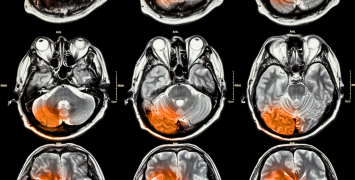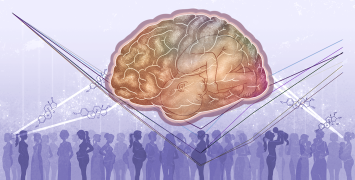Feeling legs again improves amputees’ health
Two volunteers are the first above-knee amputees in the world to feel their prosthetic foot and knee in real time.
Their bionic prosthesis, developed by a European team of researchers, has sensors that connect to residual nerves in the thigh. The resulting neurofeedback reduces physical and mental strain for prosthesis users as well as their phantom limb pain. They can also walk faster and with more confidence. Researchers, partly supported by ERC funds, recently reported on their achievement in Nature Medicine.

Slideshow: Adjusting the prosthesis on volunteer Savo Panic - Stanisa Raspopovic adjusting the prosthesis - A simple walk on sand can be very exhausting: Volunteer Savo Panic on the left, Federica Barberi and Dario Bortoloti on the right
People with intact legs feel their feet touching the ground when walking. The nervous system constantly draws on sensory feedback to precisely control muscles. People using a leg prosthesis, however, do not know precisely where the prosthesis is located, how it is moving or what type of terrain it is standing on. They often cannot trust their prosthesis completely when walking. This leads them to rely too often on their intact leg, which in turn reduces their mobility and causes them to tire quickly. A simple walk on pebbles or sand can prove very exhausting. Furthermore, amputees often experience phantom limb pain, a condition that existing medications often cannot treat.
An international team of researchers, led by ETH Zurich and Lausanne-based start-up company SensArs, has now developed an interface to connect a leg prosthesis with the residual nerves present in the user’s thigh, thus providing sensory feedback. In a study conducted in collaboration with the University of Belgrade, the scientists tested this neurofeedback system with two volunteers who have an above-knee leg amputation and use a leg prosthesis.
“This study shows how beneficial it is to the health of leg amputees to have a prosthesis that works with neural implants to restore sensory feedback,” said Stanisa Raspopovic, Professor at the Institute of Robotics and Intelligent Systems at ETH Zurich. He received a received 1.5 million euro through an ERC Consolidator Grant in 2017 for this research.
Transforming artificial signals into natural ones
To provide the nervous system with sensory information, the scientists began with a commercially available high-tech prosthesis: they attached tactile sensors to the sole of the prosthetic foot, and collected the data on knee movement provided by the prosthesis’s electronic knee joint.
For the three months that the experiment lasted, surgeons placed tiny electrodes in each volunteer’s thigh and connected them to the residual leg nerves. The research team developed algorithms to translate the information from the tactile and motion sensors into impulses of current – the language of the nervous system – which were delivered to the residual nerve.
Then nature does the rest: the signals from the residual nerves are conveyed to the person’s brain, which is thus able to sense the prosthesis and helps the user to adjust their gait accordingly. The machine and the body are finally connected.
Watching this video you are accepting Youtube cookies policy
Reduced phantom limb pain
The interface with the nervous system can also be used to stimulate the nerves independently of the prosthesis. Before they started the trial, both volunteers complained of phantom limb pain. Over the course of a one-month therapy programme with neurostimulation, the scientists managed to considerably reduce this pain in one of the volunteers; in the other, the pain disappeared completely.
The scientists are optimistic about these results but they point out the need for a longer investigation and a larger number of volunteers to draw more significant conclusions.
This article was adapted from ETH Zürich article.
Stanisa Raspopovic is an Assistant Professor of Neuroengineering at the Swiss Federal Institute of Technology, Zurich. Previously he was at SensArs Neuroprosthetics and EPFL, Lausanne. His research is focused on the development of innovative devices for treatment of neurologically disabled persons. He pursues the hypothesis-driven technology development: constructing mechatronic systems directly interfacing the environment with the residual nervous system based on the computational modeling. He directly participates in the in-vivo testing of these systems.






